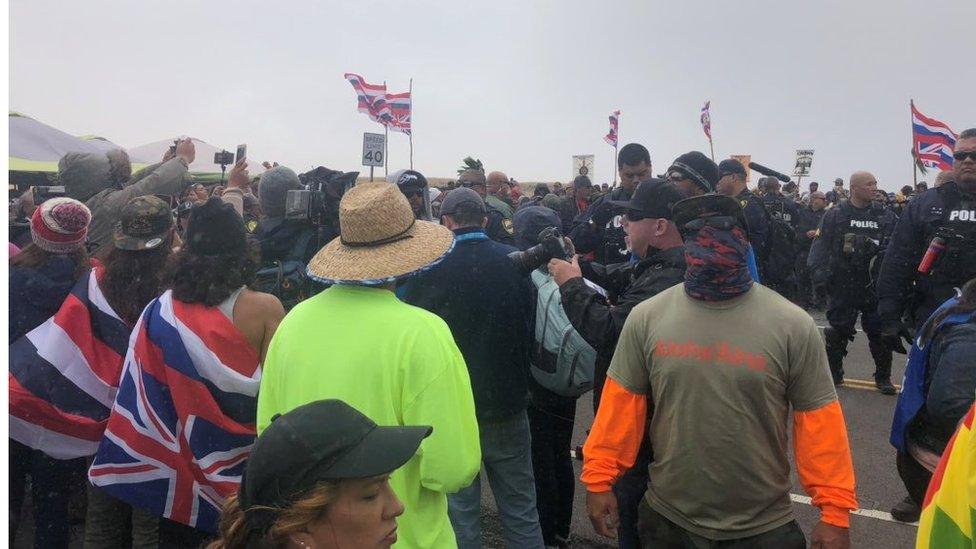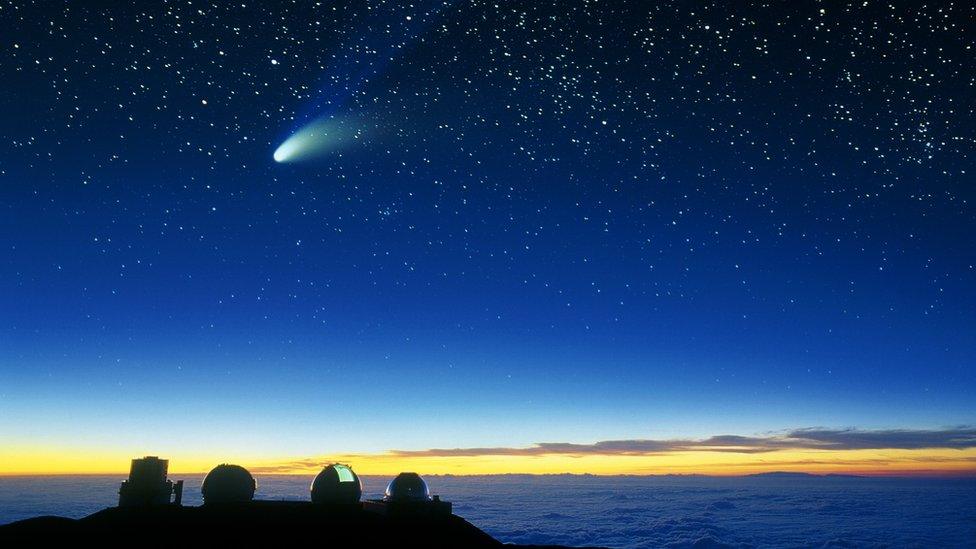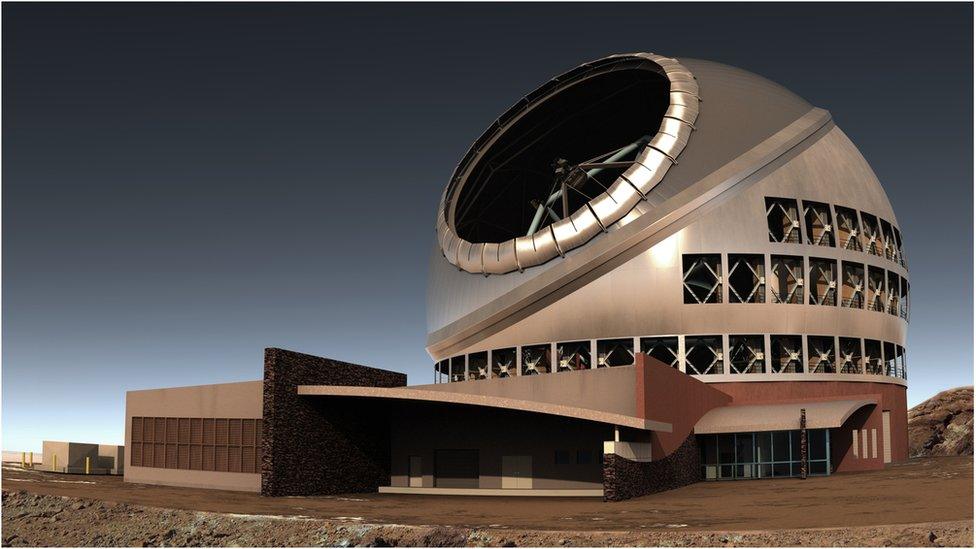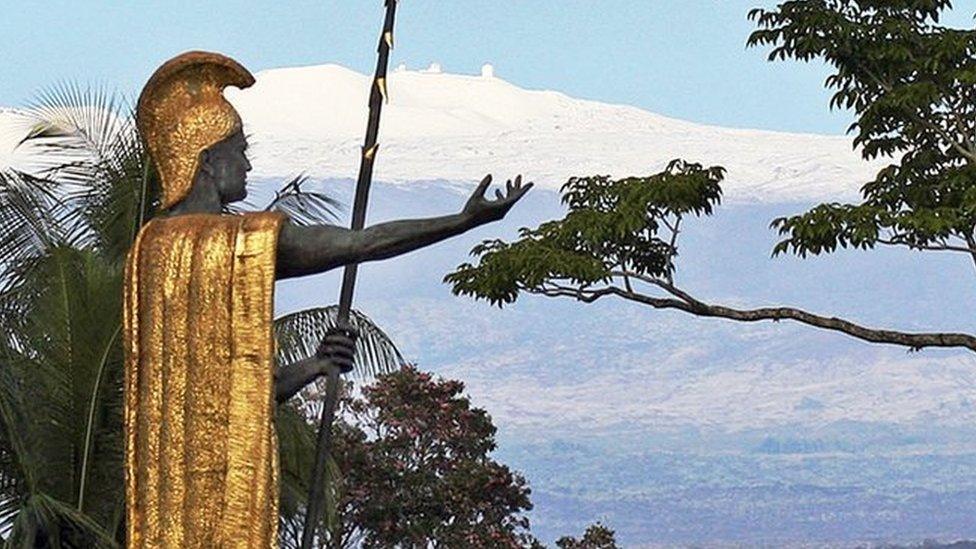Mauna Kea: Hawaii protesters delay giant telescope construction
- Published

Protesters say the telescope will disturb sacred land and cause environmental damage
Protesters and authorities in Hawaii are facing off over plans to build a telescope on top of a mountain that some native Hawaiians consider sacred.
Demonstrators have been forming a human blockade to prevent access to Hawaii's tallest mountain, the Mauna Kea.
Hawaii Governor David Ige has signed an emergency proclamation, giving law enforcement officers more options to break up the blockade.
The Thirty Meter Telescope (TMT) would be among the largest in the world.
The $1.4bn (£1.1bn) project has long been a source of controversy in Hawaii, where protesters say it will disturb sacred land and cause environmental damage.

An artist's impression of how the telescope will look
Work was previously paused after protests in 2015, but the Supreme Court ruled in October that construction could go ahead.
The protests this week, led by a group of native Hawaiian elders, came after authorities announced that construction work on the TMT was set to begin., external
By the third day of protests on Wednesday, more than 1,000 people had joined the blockade, according to local media reports.
But officials said that while protesters had delayed their plans, they would not succeed in stopping the project.
On Wednesday, police arrested people who refused to stop blocking the road and Mr Ige later announced that he had issued the emergency proclamation.
"The emergency proclamation gives law enforcement increased flexibility and authority to close more areas and restrict access" to the mountain, external, he wrote on Twitter.
"This will allow law enforcement to improve its management of the site and surrounding areas and ensure public safety."
Why is Mauna Kea controversial?
Mauna Kea, located on Hawaii's Big Island, is a dormant volcano. There are currently no legal limits to telescope construction on the site.
Opposition to construction there in general has existed for decades as many indigenous Hawaiians consider it the most sacred mountain.
But for scientists, cloud-free skies, low atmospheric water vapour and other conditions make it among the best sites in the world for astronomy.

Mauna Kea is technically "ceded land" - the legal term for land that once belonged to the Hawaiian kingdom and is now held in trust by the state for the benefit of native Hawaiians.
What will the TMT study?
The plans for the telescope include a 30m (98ft) wide mirror, making it three times as wide as the largest currently existing visible-light telescope in the world.
Using the TMT, astronomers hope to investigate the universe's "dark ages", when the first sources of light were created, as well as galaxies, black holes and planet formation.
- Published31 October 2018

- Published2 November 2015
